Crafting Trump's Hero Narrative: Media's Visual Complicity in the Assassination Drama—and the Shoe Panic Explained
Now that Trump has spun the attack images into convention hype and marketing gold, we dissect the media's role, address the problem with the bullet photo, and unravel his mysterious shoe anxiety.
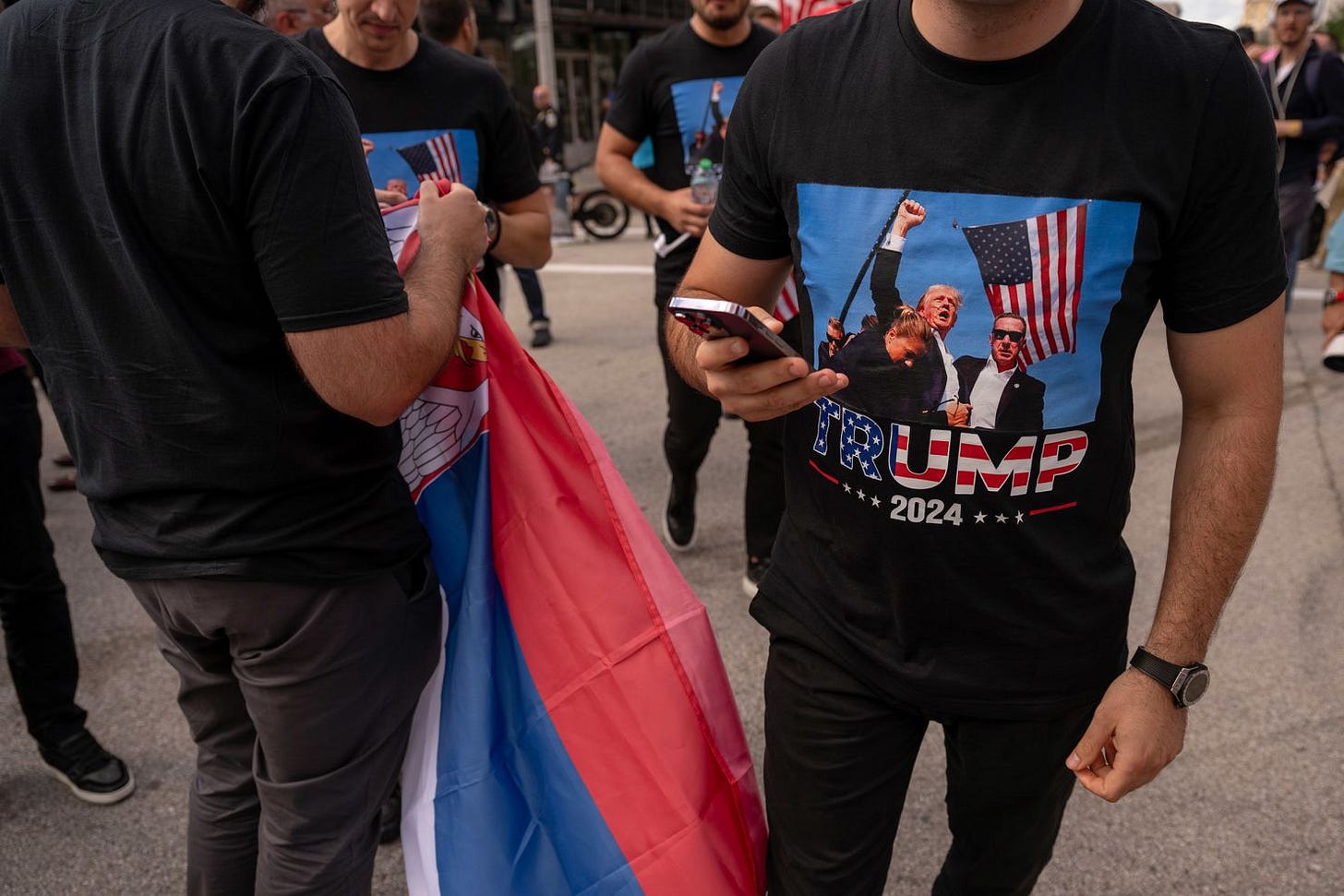
On July 15, 2024, former President Donald Trump was the target of an assassination attempt at a rally in Butler, Pennsylvania. Besides Trump being grazed by a bullet, one died, and two were severely injured. The less appreciated casualty was the blow to reality. The dramatic visual framing of the event and an enamored media response to the images substantially skewed the horror in Trump's favor.
The Triumph of Heroic Imagery
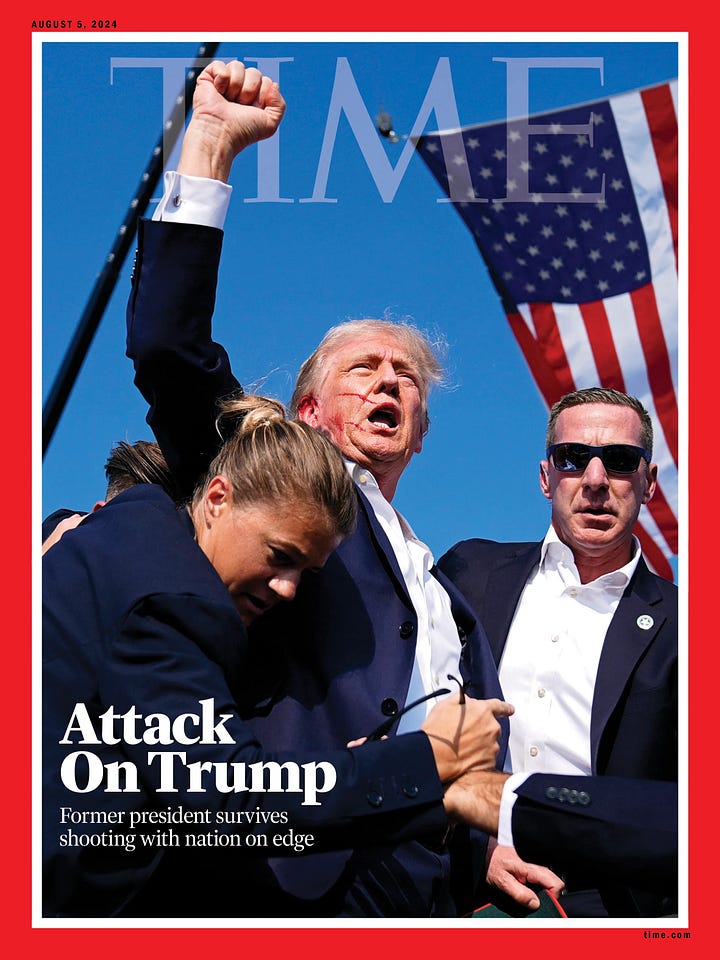

Photographs of former President Donald Trump pumping his fist after surviving the attack were prominently featured. These images became iconic, symbolizing defiance and resilience, and bannered countless domestic and international newspapers and online media platforms.
However, the elevation of these images directly served Trump's interests.
The Media's Immediate Response
In the hours following the attack, major news outlets such as Politico, The New York Times, The Atlantic, and The New Yorker featured visual analysis lauding Trump’s mastery of visual communications and his brilliant stage direction of the shooting. The New York Times reported: "A bloodied Donald J. Trump made Secret Service agents wait while he expressed his defiance. The moment epitomized his visceral connection with his supporters and mastery of the modern media age."
It's not that this wasn’t true, but the analysis lacked context, focusing almost exclusively on Trump’s gifts and the historic nature of the most gallant images.
Given Trump's toxicity, self-absorption, and authoritarian tendencies, his handling of the assassination attempt did not deserve such singular praise. Instead, it presented an opportunity to focus on his perpetual opportunism and how, on the eve of the Republican convention, Trump's manipulation of the attack, however instinctive, resulted in home-run images that overshadow his scowling mugshot and all the depictions of Trump as Rambo or Superman.
Also lost in the media reaction was the subversion of human response. Just like Trump helped make millions of COVID deaths and the ensuing grief and reflection disappear, what was otherwise a historic assault on the national psyche in the fields of Pennsylvania has also been erased.
Beyond the fist-pumping and the mouthed words 'fight, fight, fight,' this photo captures Trump's deft manipulation of the attack to deflect and incite. The triumphant, muscular response in the background captures the remarkable pivot from shock and horror to defiance and rage, revealing Trump’s ability to transform a potentially devastating moment into a rallying cry.
Fear and Vulnerability are Normal, Invincibility Is Not
What happened to the trauma? What did the attack have to say about the effect on the national psyche, or conversely, public desensitization and the normalizing of political violence? What did it say about the emotional redirection of that impact on Trump and his followers?
Sadly, when it comes to Trump, there is no injury or aftermath, and the media’s response conformed to that pattern.
By showcasing the heroic images, photo editors and opinion writers downplayed the impact and significance of pictures that portrayed a normative reaction to an act of terror.
As a result, the heroic scenes overshadowed the pictures that depicted Trump as fallible, as someone who was also visibly and, one has to assume, emotionally affected by the assault.
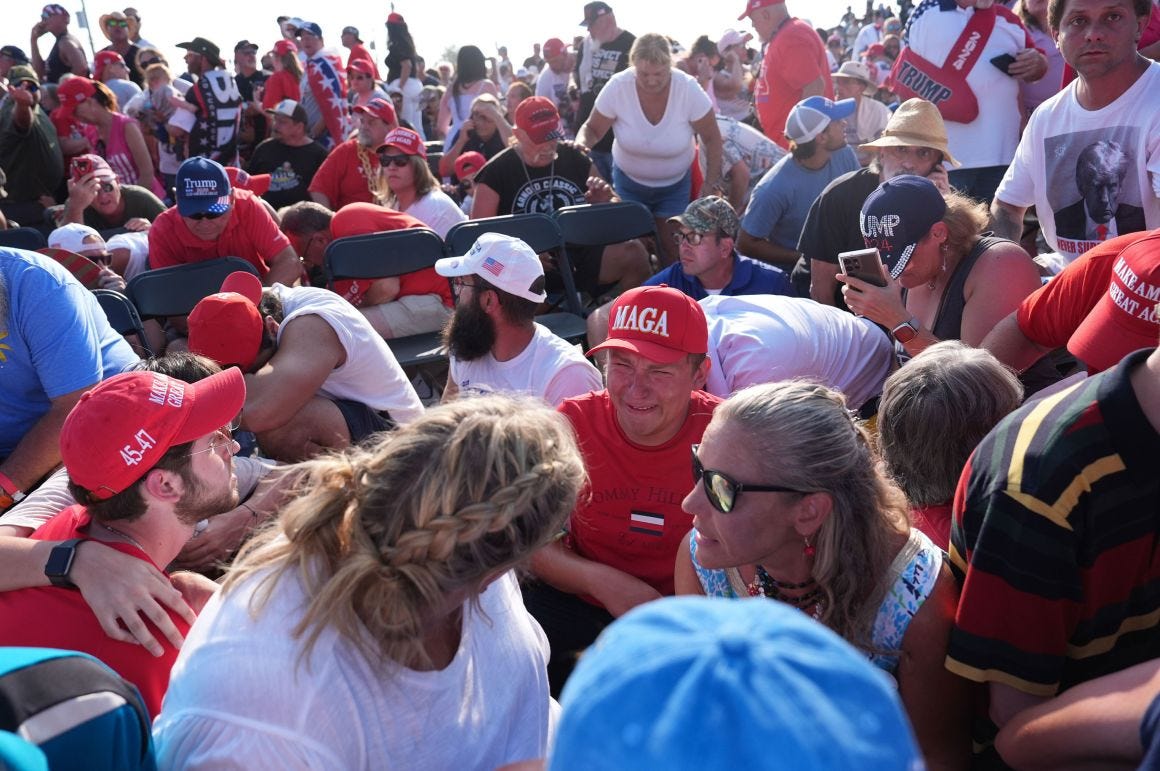
The media also minimized photos revealing Trump's shaken followers, mirroring Trump's contempt for any display of weakness.
More Dazzle
Spectacular as it is, the intense media focus on Doug Mills' photo capturing a bullet whizzing past Trump represents yet another instance of drama over substance. One can only imagine what Ronald Reagan, who shifted to supporting gun reform after surviving an assassination attempt, would say. It's no surprise that Trump and his party have ignored the gun violence and his wounding by an automatic weapon, the notorious AR-15. However, the media's silence is another facet of their enabling behavior.
What’s in a Pair of Shoes?
A lingering mystery from the shooting, primarily overlooked—much to Trump's presumed relief—is why he was so obsessed with his shoes while his life was on the line. Why was his immediate response to being struck by a bullet, before pausing the agents to deliver his now famous fist pump, an urgent demand for his shoes?
6:12:33 p.m.
Trump: “Let me get my shoes. Let me get my shoes.”
…
6:12:36 p.m.
Trump: “Let me get my shoes on.”
…
6:12:42 p.m.
Trump: “Let me get my shoes.”
—Timeline via CNN
To answer this question, we must look back to last November in New Hampshire when Trump faced a serious primary challenge from Ron DeSantis. In a video of his stump speech, Trump, who claims to be 6’3”, is seen mocking the 5’8’’ to 5’11” DeSantis for wearing lifts in his cowboy boots.
The real tell behind Trump’s response—his Achilles' heel, if you will—is his obsession with his height. For someone whose vanity is paramount, risking his life in a live shooter situation, even after being hit, seems a small price to maintain the fiction of his stature.
Fortunately, a behind-stage video released by WBEN lent more context to why Trump’s shoes are so tight and why the fact a Secret Service agent knocked Trump’s shoes off proved as significant a threat to Trump as the shooter himself.
These screenshots were annotated by The New York Post. I pulled the following frames from the video:
Here, you can see a Secret Service agent leaving the scrum, suddenly scooping up Trump’s shoe and pitching it off stage.
In this frame, a shoe insert is flying free of Trump’s shoe just beyond the agent on the ground.
And here, as Trump is led to the steps, you see both lying on the ground.
Trump’s Relationship With Violence
What is anathema is any journalist daring to suggest a relationship between the hostile environment Trump creates and how he might become a target of like hostility.
This photo captures a striking juxtaposition: Trump reacting to a bullet grazing his ear alongside a follower wearing a 'Trump 2024 Mean Tweets' t-shirt. While the connection may seem arbitrary, it inadvertently highlights the theme of meanness and the principle of cause and effect. According to the proverb, you often reap what you sow.
Unencumbered by the constraints of the U.S. media sphere, the foreign press directly confronts Trump and MAGA bloodlust. While the heroic images focused on the stage, the fist, and the American flag, Libération used a tight crop to highlight the injured ear and the blood crisscrossing Trump’s face. Disrupting the narrative Trump expertly laid down, the result is almost vampiric.
From Butler to Milwaukee
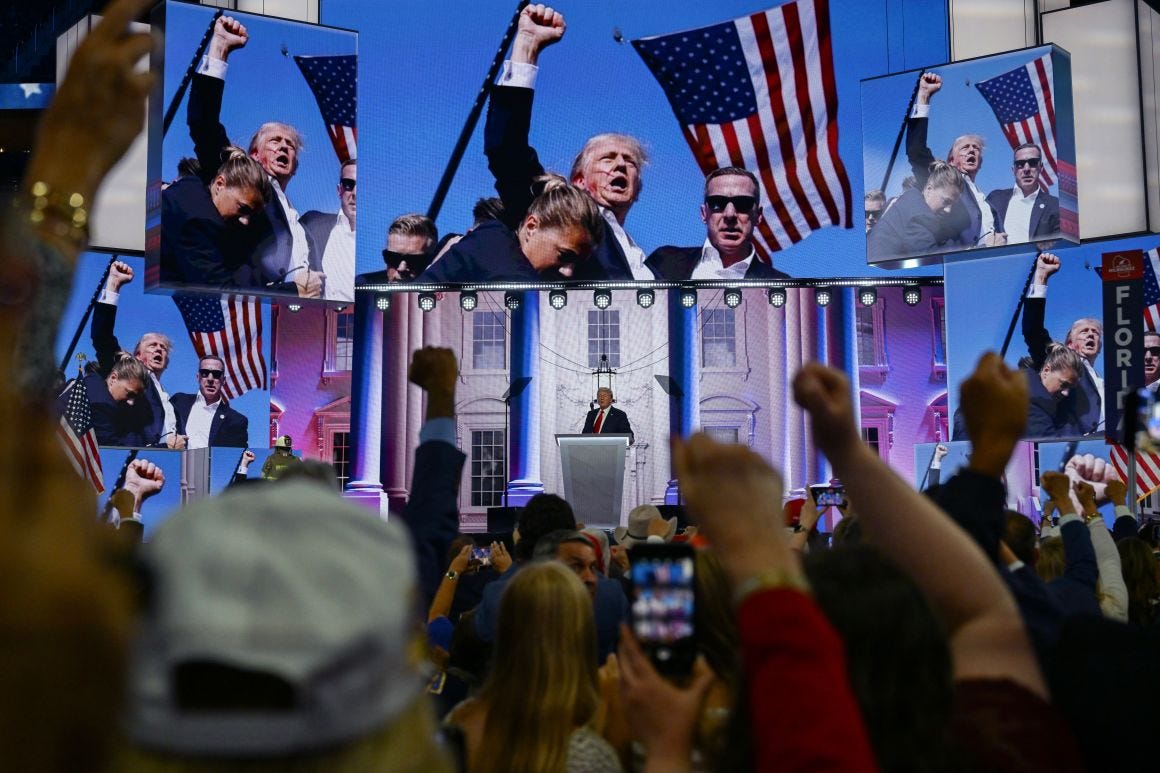
He stage-managed it on Saturday and took it to the bank on Thursday.
What we witnessed in Butler went deeper than Trump and his visual gifts, and it comes at the cost of our culture and democracy not to recognize Trump’s instant conversion of tragedy into fortune. The takeaway from these pictures is to realize that Trump’s instinct for invincibility and the impetus to fire up his tribe are as much a symptom as a skill. By praising Trump for his tactics, the media has taken his sociopathy at face value when this vitriolic man, spewing hate and breaking the rules all day long, dodges bullets for a living.
Regarding the failure to connect the dots between Trump as a champion of havoc and insurrection and the attempt on his life, David Frum wrote that “nobody seems to have language to say: We abhor, reject, repudiate, and punish all political violence, even as we maintain that Trump remains himself a promoter of such violence, a subverter of American institutions, and the very opposite of everything decent and patriotic in American life.”
This myopic approach extends beyond words, failing to grasp the rhetorical force of visual language. The media's sensationalized treatment of the attack imagery doesn't just report—it reinforces. In doing so, it unwittingly echoes a darker historical precedent: a modern-day triumph of the will.
Thank you for visiting Reading the Pictures. Despite our visually saturated culture, we remain one of the few sources for the analysis of news photography and media images. This post is public, so feel free to share it.
To receive new posts and support our work, consider becoming a free or paid subscriber. Because we are a non-profit, your subscription is tax deductible.



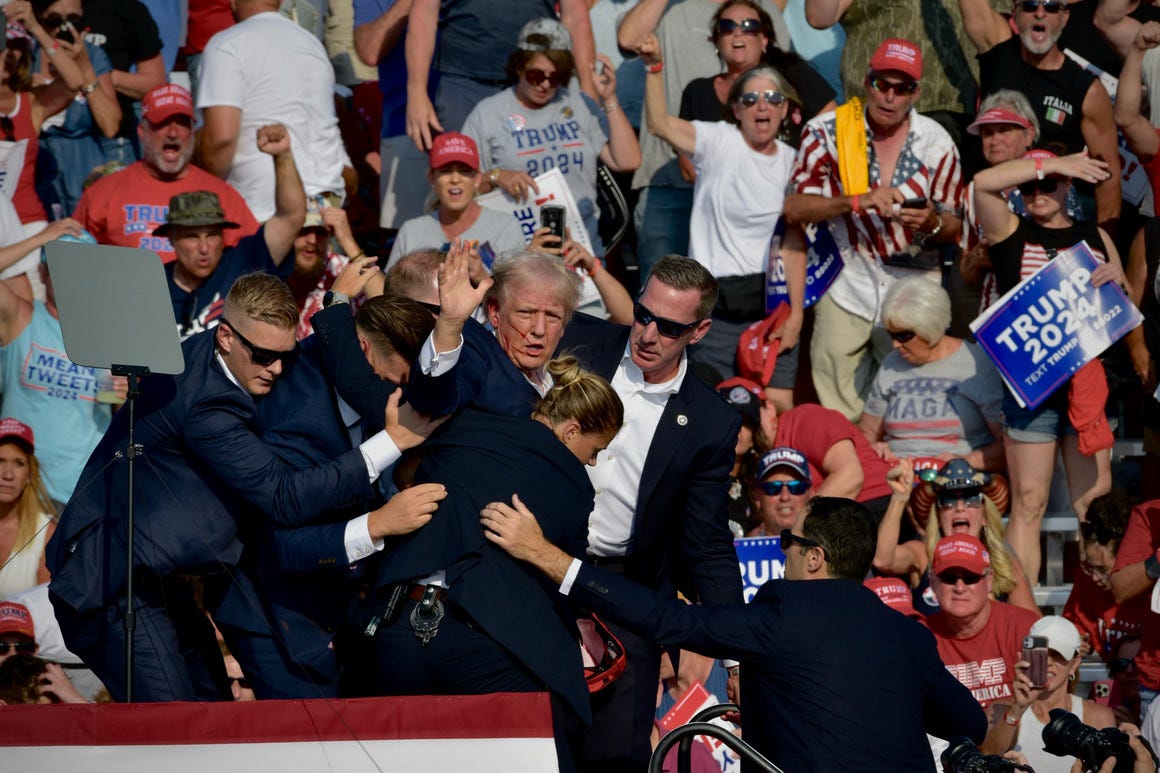
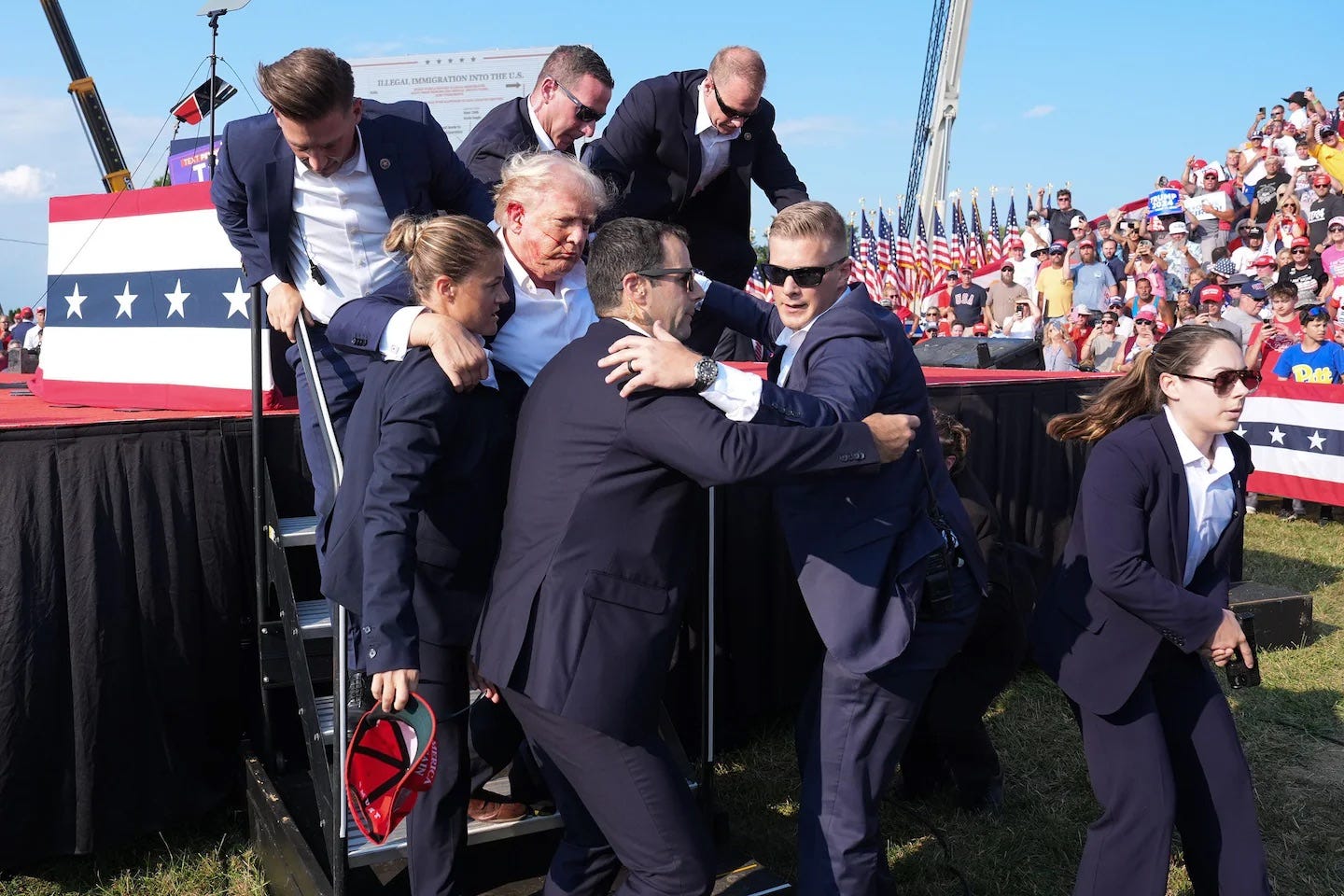
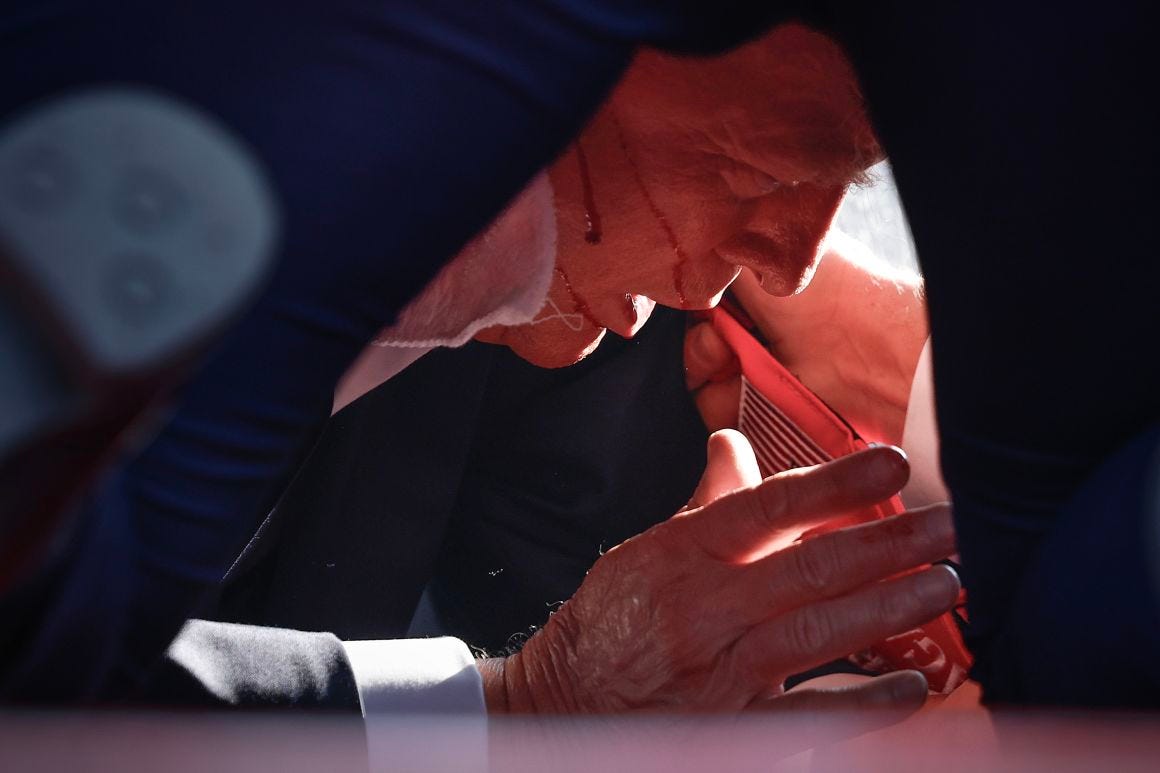
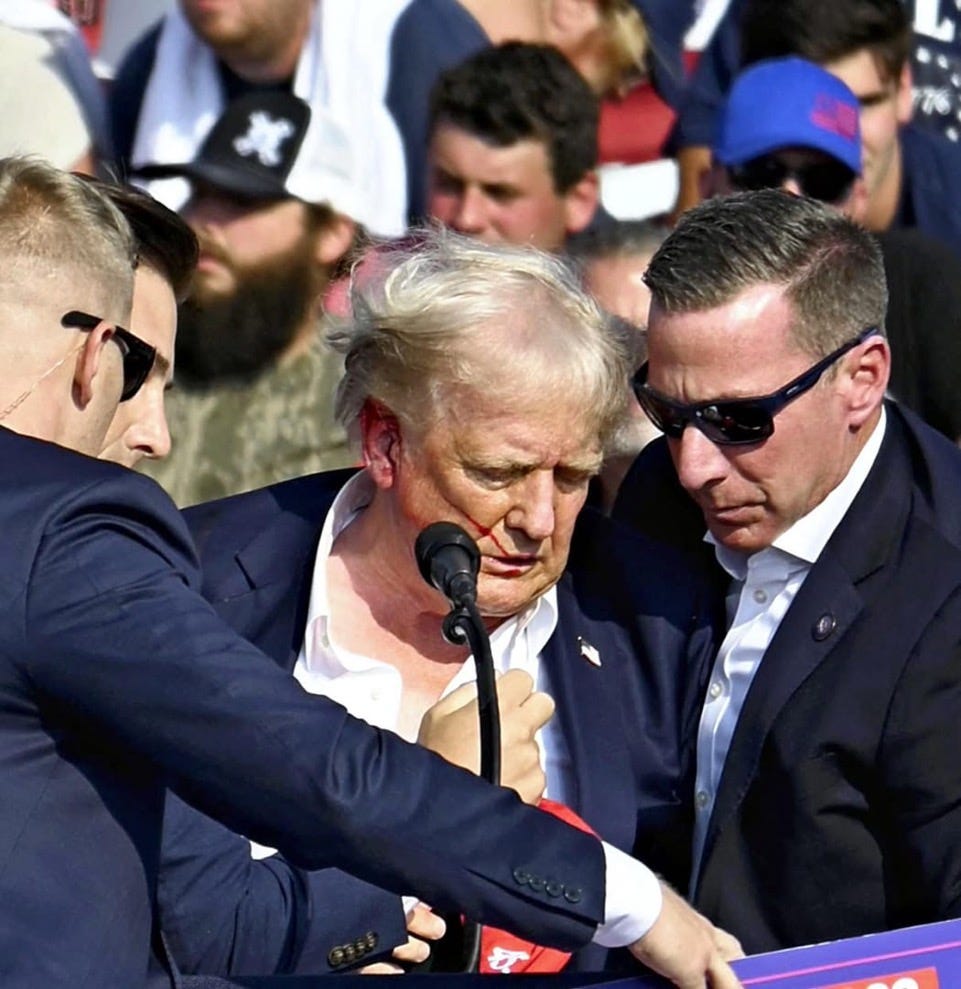
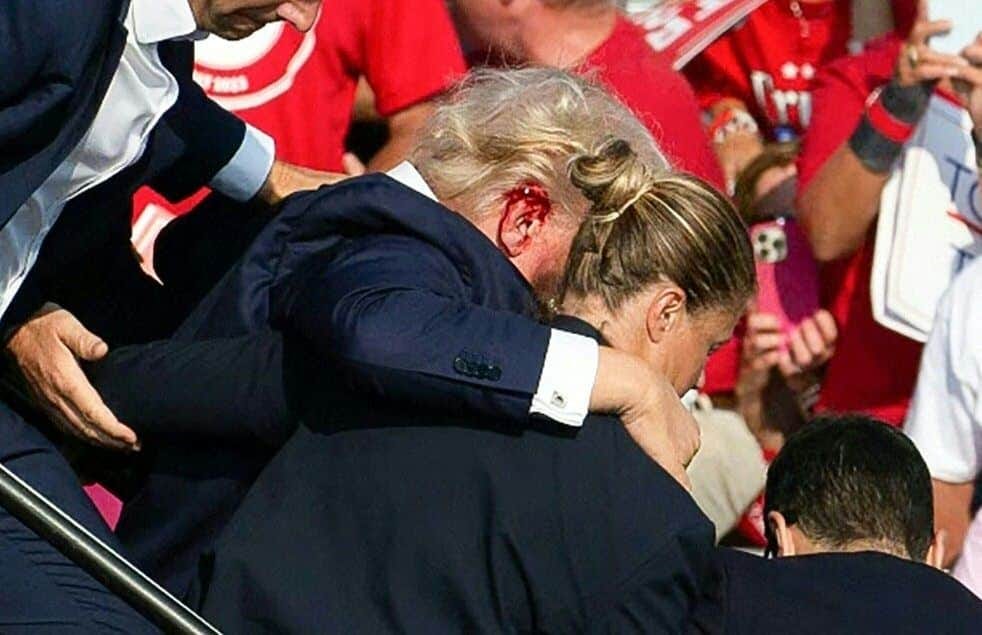
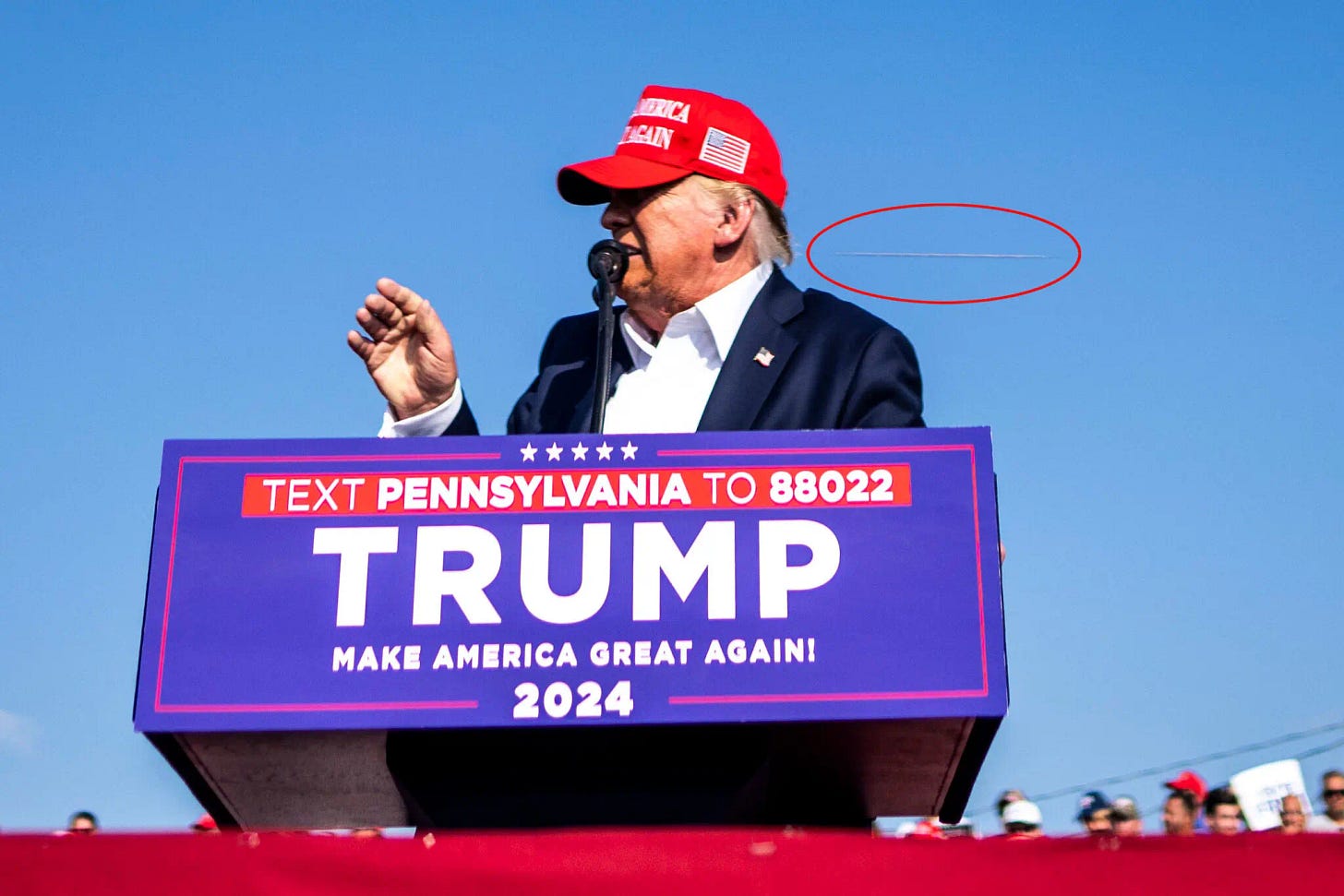
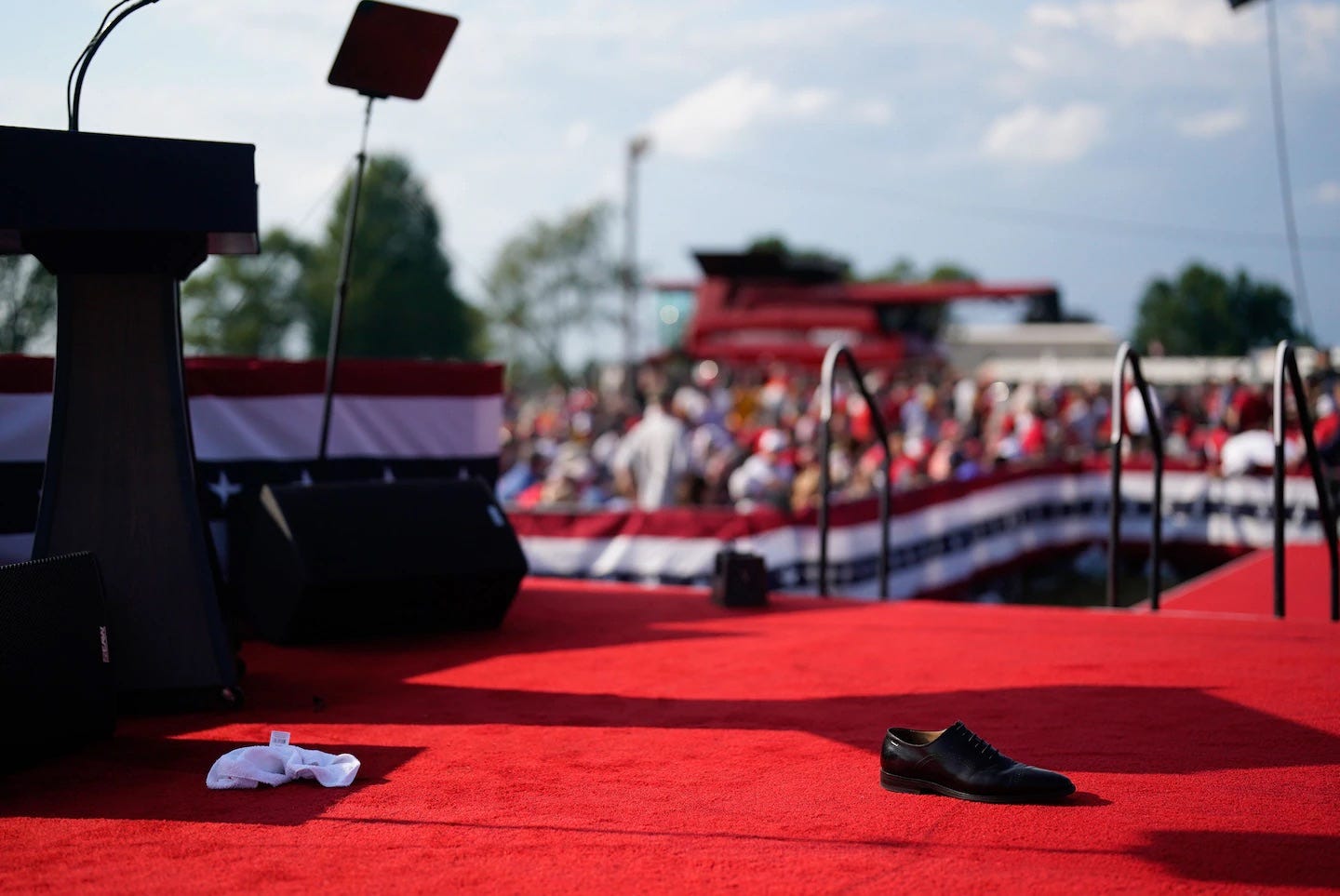


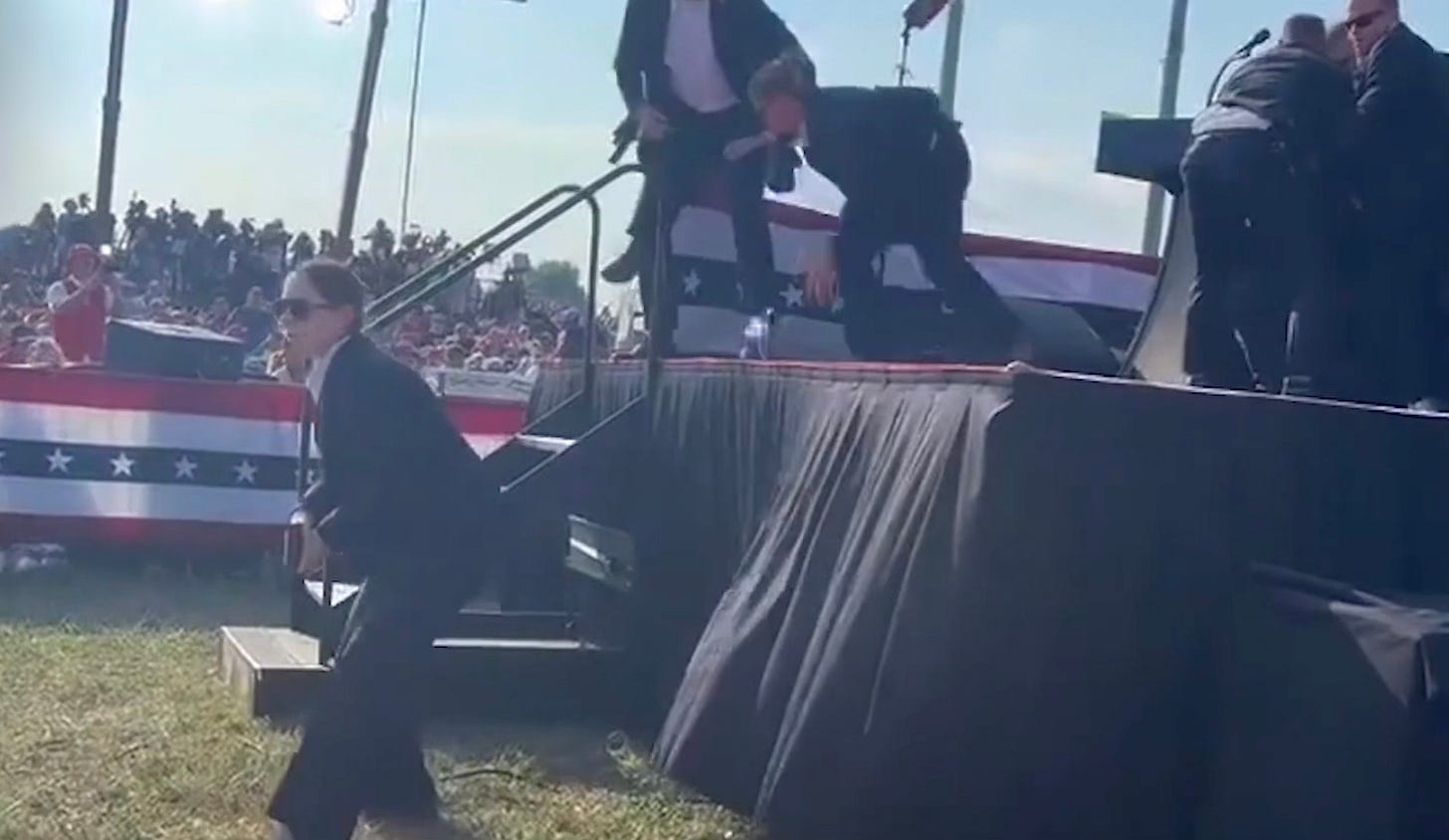
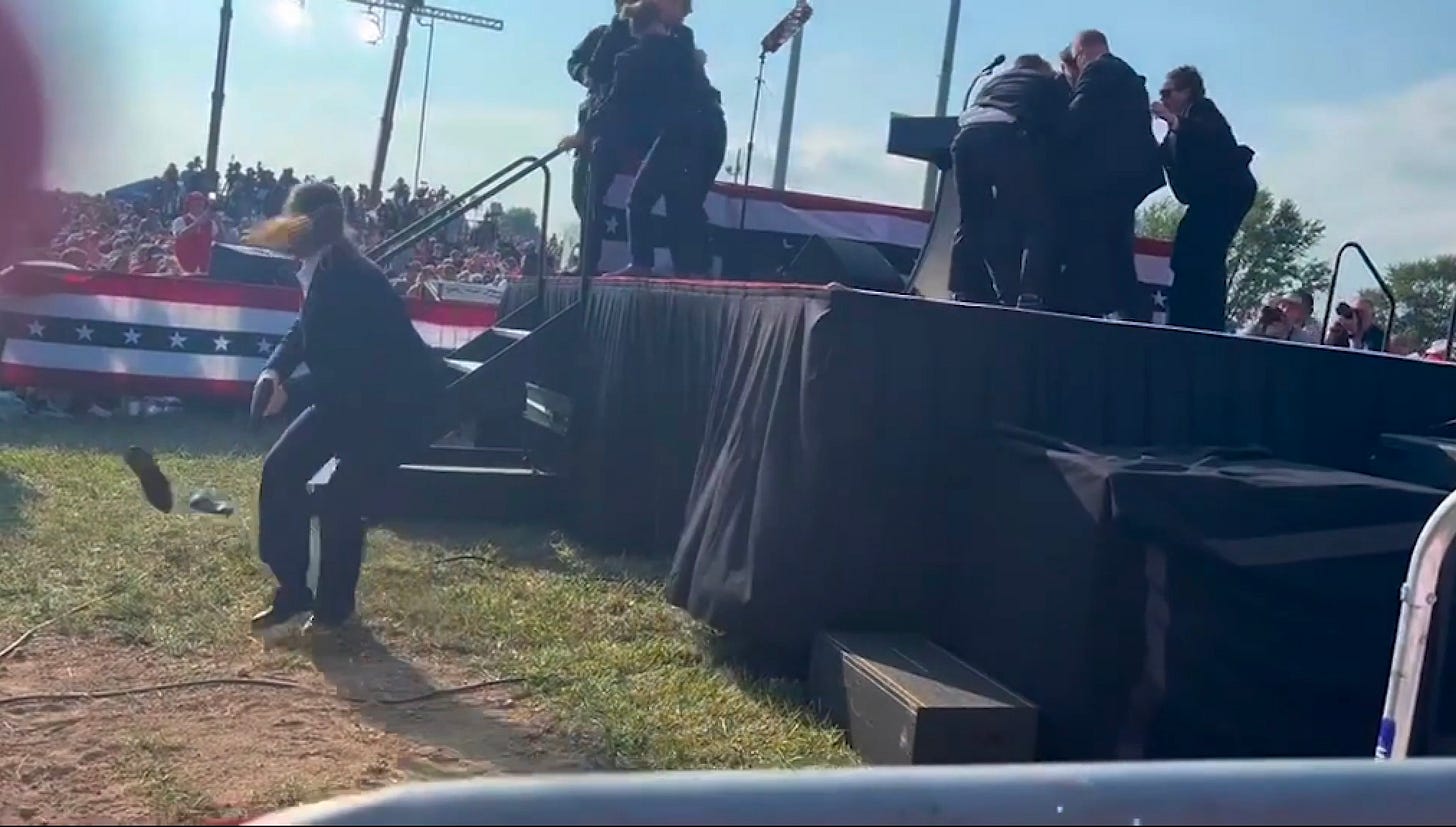

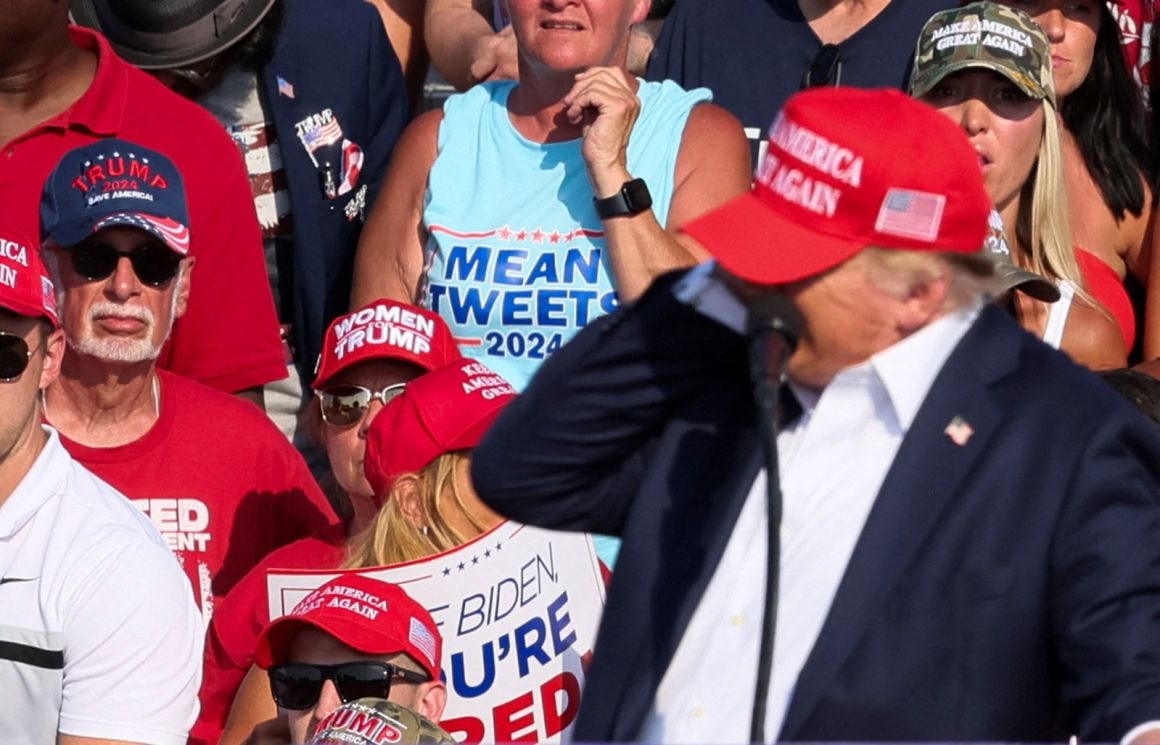
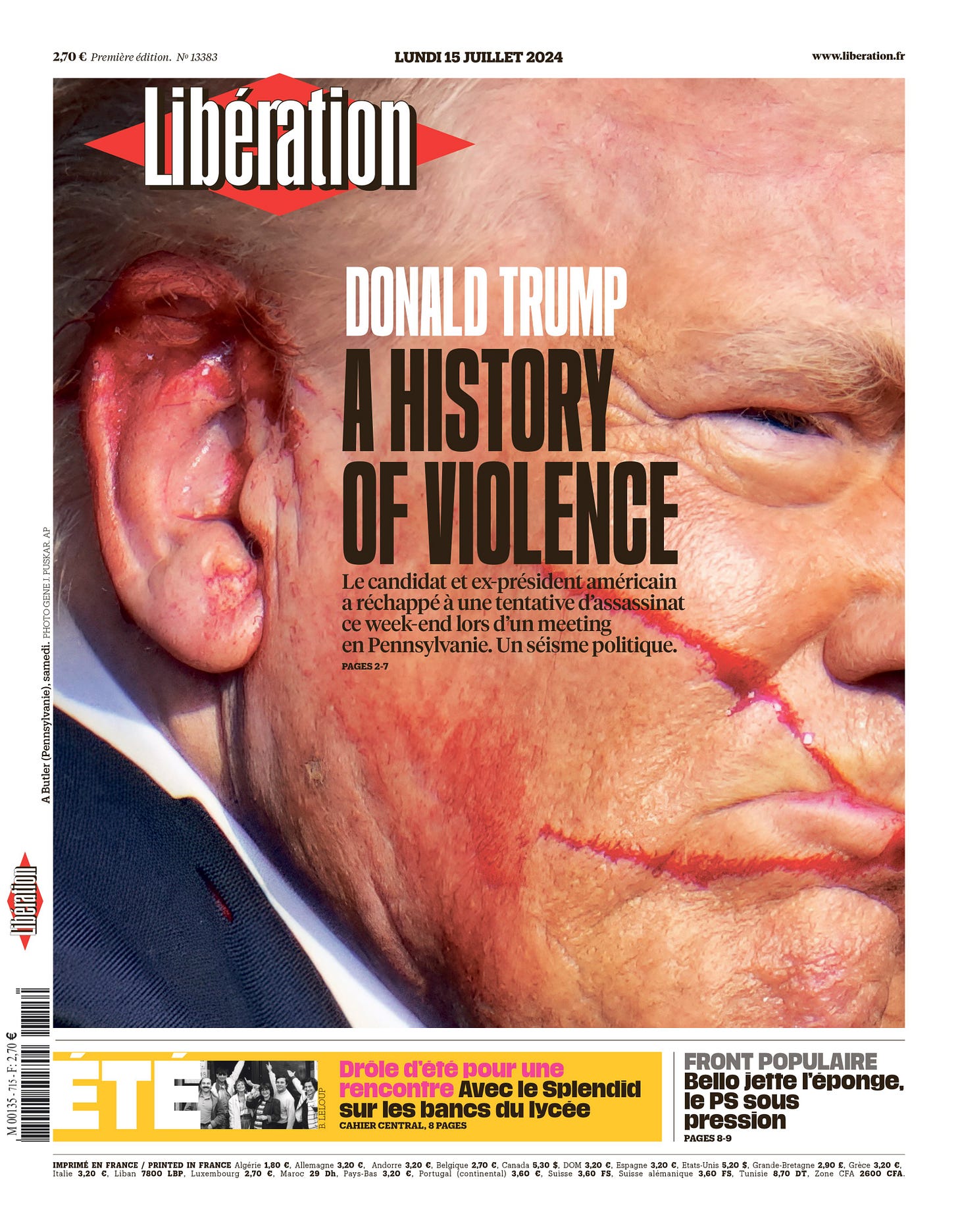
Excellent analysis delivered with great clarity.